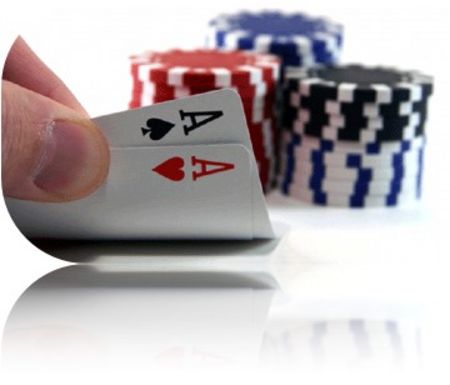Straight Draws

There are three main types of straight draws: open-ended using two cards in your
hand, open-ended using one card in your hand, and gut-shot draws. Lei's quickly
summarize the odds for straight draws. An open-ended straight draws is
approximately 2.2 to 1 against improving by the river. A gut-shot draw is
approximately 5 to 1, but is 11 to 1 when you plan on just taking one more card. An
open-ended straight with a pair has 10 good outs (eight for the straight and two for
trips), which is 1.6 to 1. An open-ended with two overcards should hit a little over
50% of the time, so you are even money. Be careful however with an overcard out
since it could be counterfeited by giving an opponent a straight.
Since we are discussing straight draws, this is a good time to discuss why
connected cards are higher valued starting hands than one-gapped or two-gapped
hands. Two connected cards can have up to four different straight draws, while a
three-gapped hand only has one possibility. For example, if you start with 98, there
are four combinations that could give you a straight: QJT, JT7, T76, and 765.
Compare this to when you hold 97: JT8, T86, and 865. Now look at two-gapped
hands such as 96: T87 and 875. Connected cards give you much better odds of
hitting the straight; therefore, they are more profitable than gapped hands.
Straight draws also increase in value like flush draws, depending on other qualities
of your hand. For example, you could have a pair or overcards, which might add
value to your draw. On the other hand, straight draws decrease in value whenever
the flop is two- or three-suited or paired.
An open-ended straight draw has eight outs, but this might only be six outs if an
opponent is on a flush draw. There is also the risk that you hit your draw on the turn
only to lose to a flush on the river, so your straight will only hold up 4 out of 5 times;
therefore, you need to discount your pot odds accordingly. Playing straight draws
with a paired flop or two-suited flop depends on the size of the pot and the overall
likelihood of your opponents being on a draw. In a heads-up situation, the chances
are less likely that your opponent has a strong draw. If there are multiple players in
the hand and a few have already called the flop, you can probably assume to be
against a flush draw or a set and play accordingly.
It is difficult to discuss strategy for every type of straight draw with every type of
flop; therefore, we will first look at open-ended straight draws when using both
cards in your hand, and then look at those open-ended draws when you are using
only one of your pocket cards. The final section of the chapter will discuss gut-shot
draws. All of the discussion assumes a rainbow flop unless otherwise noted.
NEXT...
Open-ended Draws Using Two Cards in Your Hand

